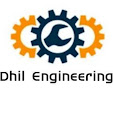In conjunction with our December 2013 TechLINE article (pre-trip P6-5), Carrier Transicold has introduced the following procedures to assist the technician in troubleshooting a P6-5 occurrence.
PrimeLINE® unit pre-trip P6-5 ensures that the compressor holds pressure internally, assuming the ESV (P6-6), DUV (P6-7) and EEV (P6-10) are working correctly. Due to the complexity of P6-5 testing, the best practice is to always use the latest version of software to ensure that the most up to date diagnostic is used.
At the start of pre-trip P6-5, the compressor will run to create a pressure differential between the suction and discharge of the compressor. On completion, the compressor is turned off. If the suction side pressure does not increase more than 8 psi, the test passes, otherwise, the test fails. If the test fails, the cause of the leakage needs to be determined.
The 8 psi rise in suction pressure may be attributed to high pressure returning back to the compressor through a leak at any of the following refrigeration circuits:
# Electronic Expansion Valve (EEV)
# Economizer Expansion Valve (ESV)
# Digital Unloader Valve (DUV)
# Pressure Transducer (DPT, SPT, EPT)
# Compressor
The following procedures are recommended to assist the technician in the troubleshooting
procedure.
1. Confirm software Rev.
a. Access Cd18.
b. Confirm software is revision is 5365 (or greater). Seek agreement from the equipment owners if necessary, otherwise, update software to latest version and run P6-5.
2. Test Pressure Transducers (DPT, SPT, EPT)
a. Remove DPT, SPT and EPT from the refrigeration system.
b. Check Cd14 and Cd12 - Cd12 will display suction pressure in the right display. Pressing ENTER again will display evaporator pressure in the left window.
c. At sea level the disconnected DPT, SPT and EPT should all read zero. Above Sea level all the transducers should be reading the same. Replace defective Pressure Transducers, if necessary.
3. Run Pre-trip P7
a. Press PRE-TRIP, use the arrow key to scroll to test P7, then press “ENTER”.
b. The controller will initiate the High Pressure Test. If the compressor internal seals are leaking, it will fail P7.
4. Test EEV
a. Connect Manifold Gauge Set (MGS) to discharge (DSV) and suction (SSV) service valves, and midseat them.
b. Access Cd41.
c. Press “ENTER” key to select tIM, and set to 5 min, using the arrow keys.
d. Press “ENTER” key twice to select EEV and set to “0” using the arrow keys, then press “ENTER.”
e. Allow suction pressure to pull down to a vacuum, as shown on MGS. Troubleshoot and replace defective EEV (valve and or coil) if necessary.
f. Perform a power cycle to reset Cd41 setting, retest EEV if necessary.
5. Test DUV
a. Front seat the Liquid Line Service Valve and pump down the refrigerant. To perform an Automatic Pump Down using Cd59 Pump down Logic, refer to Service and Operations Manual T362 for more info.
b. Front seat the discharge and suction service valves to isolate the compressor.
c. Disconnect DUV from the top of compressor.
d. Install a ½ to ¼ inch flared adapter / O-ring (CTD# 40- 50076-00SV) to the DUV side.
e. Pressurize the line to 50 psi (3.5 bar) of nitrogen at the adapter connection, then close supply at the tank.
f. If pressure decreases at the tank regulator; the DUV is leaking and should be replaced.
g. If DUV is not leaking, energize DUV by removing coil and placing a magnet on the valve stem. This should open the valve. If the pressure does not decrease at the tank regulator, replace the valve as it did not open
6. Test ESV
a. If the DUV passes, remove the flare adapter / O-ring (CTD# 40-50076- 00SV) from the DUV side, and reconnect the line to the top of the compressor.
b. Disconnect the economizer line from the compressor.
c. Connect a tank of dry nitrogen to the Liquid Line Service valve (it should already be front seated during the pump down procedure) and pressurize the system to 50 psig, then close the supply at the tank.
d. If pressure decreases at the tank regulator, and nitrogen can be detected coming out of the economizer line; the ESV is leaking and should be replaced.
e. If ESV is not leaking, energize ESV by removing coil and placing a magnet on the valve stem. This should open the valve. If the pressure does not decrease at the tank regulator or you cannot feel or hear the nitrogen escaping through the disconnected economizer line, replace the ESV as it did not open.
Following these steps in checking the Software, Pressure Transducers, EEV, DUV and ESV ensures all are working properly leaving the compressor as the root cause of the failure. Following is a quick
P6-5 checklist for trouble shooting.
# Ensure software is revision 5365 (or greater); if not, update software to latest version and
re-run P6-5.
# Disconnect the DPT, SPT and EPT and verify pressures. Replace defective Pressure Transducers if necessary.
# Perform P7 and make sure it passes P7 test.
# Perform EEV Test via Cd41, confirm suction pressure to pull down to a vacuum as shown on MGS (Micron gauge).
# Perform DUV Test, confirm DUV is not leaking, valve opening and closing.
# Perform ESV Test, confirm ESV is not leaking, valve opening and closing.
# Ensure system pressures are correct post testing when using nitrogen for leak tests. If you have any questions, contact your Regional Service Engineer, together with a Controller Download (all data).




No comments :
Post a Comment